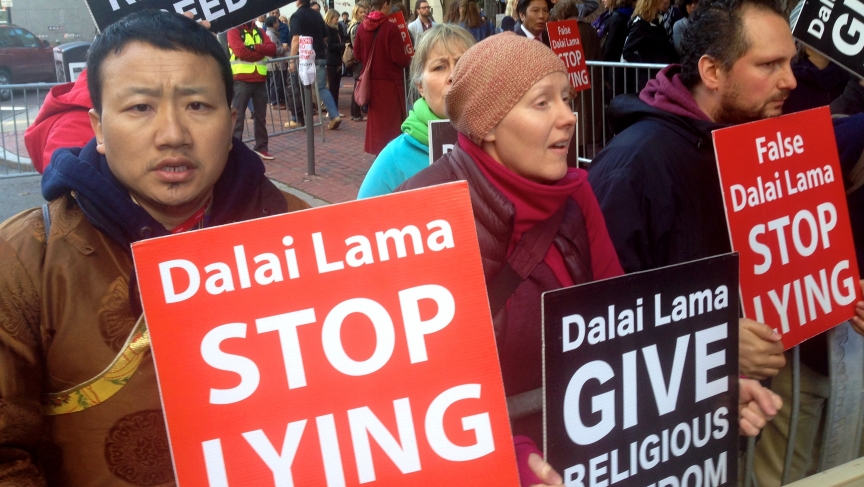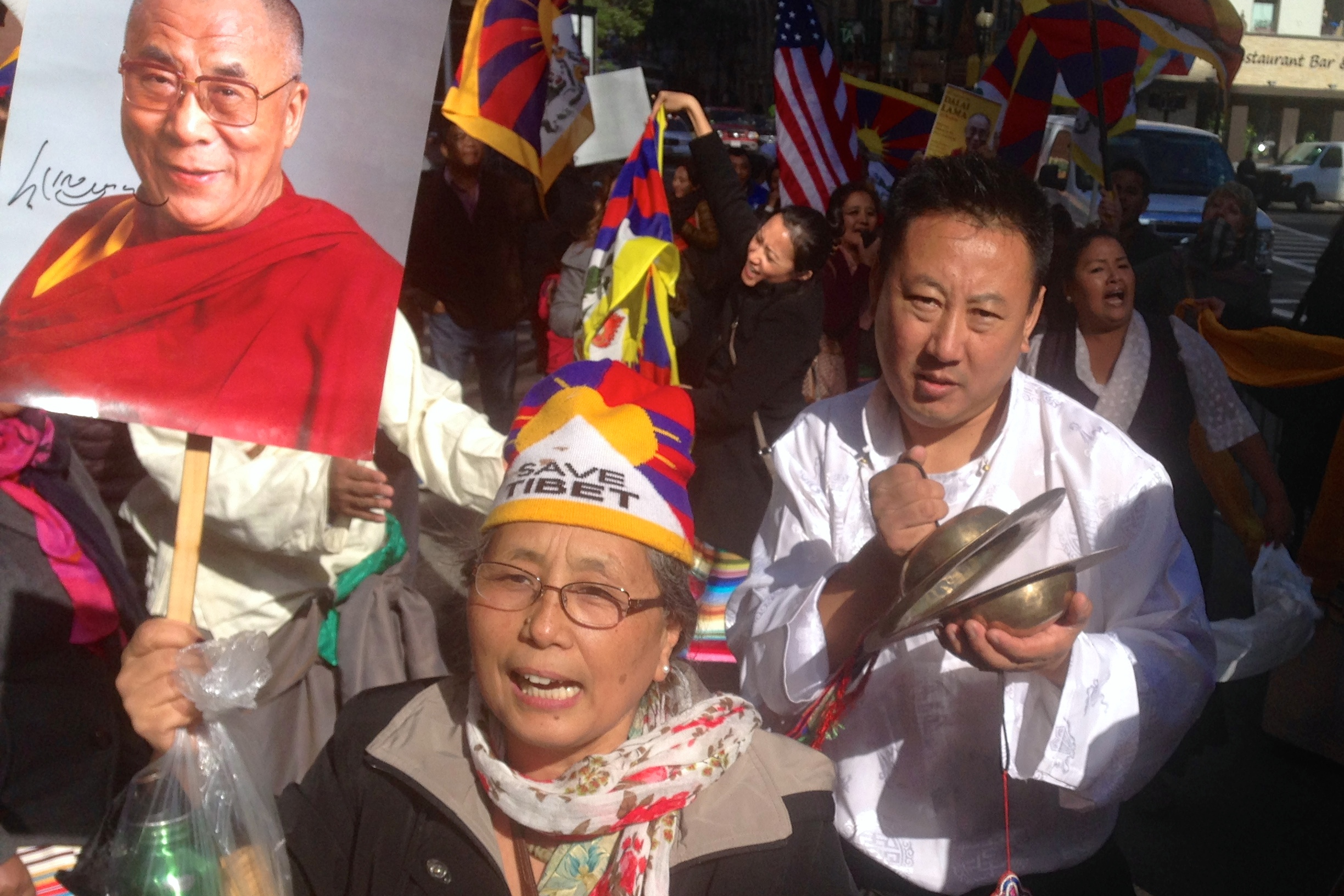Is Religion Inherently Violent?
In her new book, Fields of Blood, Karen Armstrong argues against the idea that faith fuels wars.
"Piles of heads, hands, and feet were to be seen. It was necessary to pick one's way over the bodies of men and horses." This was how the historian Raymond of Aguilers described Jerusalem in 1099, as he watched Christian crusaders conquer the city. "Men rode in blood up to their knees and bridle reins," he observed. "Indeed, it was a just and splendid judgment of God that this place should be filled with the blood of unbelievers, since it had so long suffered from their blasphemies."
When people make generalized arguments about the inherent violence of religion, this is the kind of thing they're probably thinking of: the unapologetic, triumphalist bloodletting of the Crusades; the decades-long slaughter of the Thirty Years' War; and the
dehumanizing murder sprees of contemporary jihad. And it is this kind of argument that motivated Karen Armstrong to write her newest book, aptly titled
Fields of Blood: Religion and the History of Violence,which was published last week in the United States.
The book tackles a simple question: Has religion been the cause of all the major wars in history? If you want to save yourself several hundred thousand words, the short answer is: no.
Any student of history could point out that conflicts from the campaigns of Genghis Khan to World War I had non-religious motivations. During the talks she has already given about the book, Armstrong told me in an interview, the first person to ask her a question always says something along these lines: No one actually believes that religion is the cause of all major wars in history.
But then for the rest of the talk, Armstrong said,
audience members "are insisting that [religion] is the chief cause that is to blame," Armstrong said. In her book, she writes that she has "heard this sentence recited like a mantra by American commentators and psychiatrists, London taxi drivers and Oxford academics." Religion may not have caused
all the wars in history, these people say, but it is inherently violent in a way that has undeniably shaped world history for the worse. It's this ambient suspicion that Armstrong seems to be arguing against, rallying textual evidence from thousands of years before Christ through modernity.
Although the book is framed as a polemic response to what is essentially a straw-man question, Armstrong has isolated an interesting quality of contemporary discourse about religion: It's really, really vague. Contemplating whether violence is inherent in religion
might seem like a pastime limited to college debating societies or educated retirees who have a lot of time for book talks (or dilettante journalists, for that matter), but this idea has an intangible and problematic power in Western culture—the focus of Armstrong's study. Even posing the question at the center of Armstrong's book assumes that there's a unified thing called "religion" that has stayed constant over thousands of years of human life.
But, as Armstrong points out in the book, "there is no universal way to define 'religion,'" particularly when it comes to comparing mono- and polytheistic faiths. "In the West we see 'religion' as a coherent system of obligatory beliefs, institutions, and rituals ... whose practice is essentially private and hermetically sealed off from all 'secular' activities," she writes. "But words in other languages that we translate as 'religion' almost invariably refer to something larger, vaguer, and more encompassing." This is an important premise of one of Armstrong's main arguments: It's impossible make a coherent case about the role of religion in warfare and violence throughout history and across the world, simply because religion plays very different roles in different cultures.
For example, religious belief and practice in, say, ancient Mesopotamia were very different than what they have become in modernity—a period that Armstrong and many academics say began in the West in 1648, when peace treaties ending several major wars in Europe were signed in Westphalia, a region in present-day Germany. She describes the spread of more secular governments in the West and the decline of religion as a primary organizing force in many people's lives during this period. Although "religious" violence has always had a political element, she argues, the political nature of warfare—even in wars with putatively religious justifications—has become even more pronounced in contemporary history.
The notion that "religion" is not a single belief, practice, or idea seems fairly obvious. But this claim is no less important for being self-evident.
In the United States, debates about topics like birth control, abortion, and school prayer are often presented in the framework of a monolithic, uniform, publicly expressed "religion"
in tension with a monolithic, uniform "secular culture," one that mostly considers faith to be private and personal. As Armstrong argues, throughout the contemporary Western world, this framework has had its most pernicious influence
on perceptions of—and, perhaps, policies related to—global Islam and particularly the Middle East.
“I’ve found huge hostility in the United States among secular as well as religious people toward Islam, seeing it as a faith of violence—and that is true in the U.K., too," said Armstrong, who lives in England. But "the United States is very much entwined in the history of the Middle East, and similarly, we British are deeply entwined with these issues in what we used to call the developing world.”
This is what she asks of readers in her book: Look at history to understand the complex origins of the "religious violence" that shows up in the news every day. For example, "some Western analysts have argued that suicide killing is deeply embedded in the Islamic tradition," she writes. "But if that were so, why was 'revolutionary suicide' unknown in Sunni Islam before the late twentieth century? ... Why have both Hamas and Hizbollah abandoned it?"
Even though perpetrators of this kind of violence invoke Islam, their acts are mainly
political, she writes:
What all suicide operations do have in common ... is a strategic goal: 'to compel liberal democracies to withdraw military forces from territory that the terrorist consider to be their homeland.'
This is not to deny that Hamas is as much a religious as a national movement, only that the fusion of the two is a modern innovation. The exalted love of the fatherland, which has no roots in Islamic culture, is now suffused with Muslim fervor.
All of Armstrong's arguments come back to the same basic point: It's impossible to explain contemporary or historical violence solely through religion. "Muslim fundamentalism ... has often—though again, not always—segued into physical aggression," she writes. "This is not because Islam is constitutionally more prone to violence than Protestant Christianity, but rather because Muslims had a much harsher introduction to modernity." (Here, she dates modernity to the defeat of the Ottoman Empire during World War I.) In other words: Even religious history has to be read through the narrative lens of politics.
The point, once again, is fairly straightforward: Humans start wars and slaughter their enemies and blow themselves up for complicated reasons. For a book with such an abundance of historical facts and analysis,
Fields of Blood seems to be making a simple argument at an ambitiously macroscopic level—it's an inevitably overwhelming sprint through nearly 7,000 years of history.
But maybe that's the point: Humans talk in frameworks. People see the world through cultural associations and narratives of history, even if they're not apparent; that's why the attendees of Armstrong's book talks can intellectually understand that religion hasn't caused all the major wars in history while still almost subconsciously believing religion to be inherently violent.
Fields of Bloodcan't debunk the rhetoric about religion that has built up over decades, but "the point is to sow a little seed of doubt, to muddy the waters," Armstrong told me. Perhaps that's all one book can hope to do.





















